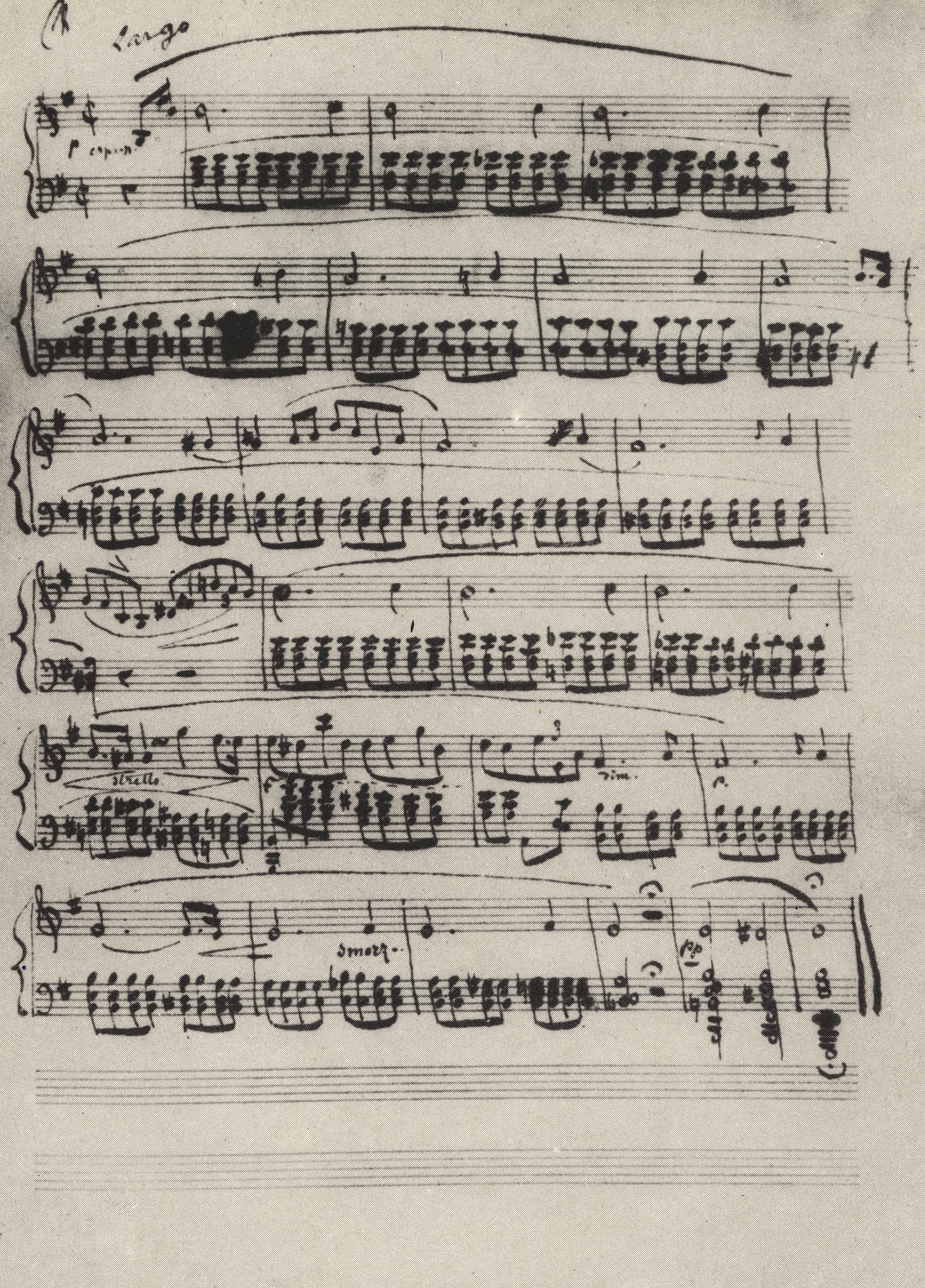




|
Grace note written into FEJ |
|

|
No grace note in remaining sources |
As a whole, the entry in FEJ is difficult to interpret. The part written on the stave creates a quite distinct, small, slashed f 1 or g1 quaver. The context speaks strongly in favour of f
1 or g1 quaver. The context speaks strongly in favour of f 1 – a repetition of a note in the form of a grace note, preceding a larger interval upwards (most often an octave), is often to be found in pieces by Chopin, cf., e.g. the Polonaise in E
1 – a repetition of a note in the form of a grace note, preceding a larger interval upwards (most often an octave), is often to be found in pieces by Chopin, cf., e.g. the Polonaise in E Major, Op. 22, b. 56, Bolero in A Minor, Op. 19, b. 160 or Scherzo in B
Major, Op. 22, b. 56, Bolero in A Minor, Op. 19, b. 160 or Scherzo in B Minor, Op. 31, b. 302. In such a context, the grace note generally facilitates the performance by enabling a change of finger, in the discussed place of the Prelude from 3 to 1 or 2. The version with the grace note can be considered an equal variant with respect to the main text.
Minor, Op. 31, b. 302. In such a context, the grace note generally facilitates the performance by enabling a change of finger, in the discussed place of the Prelude from 3 to 1 or 2. The version with the grace note can be considered an equal variant with respect to the main text.
As far as the marks added below the stave are concerned, they can be seen as, e.g. a diagonal cross (often encountered in teaching copies), a very stooped  , alternatively a digit '1' (the 1st finger on the added grace note) and a slur. We consider the latter to be most likely, hence we include it in the transcription of the text of FEJ.
, alternatively a digit '1' (the 1st finger on the added grace note) and a slur. We consider the latter to be most likely, hence we include it in the transcription of the text of FEJ.
Compare the passage in the sources »
category imprint: Graphic ambiguousness; Differences between sources
issues: Annotations in teaching copies, Authentic post-publication changes and variants, Annotations in FEJ
notation: Ornaments

